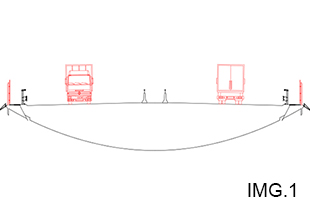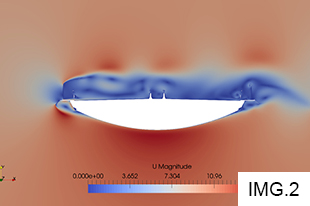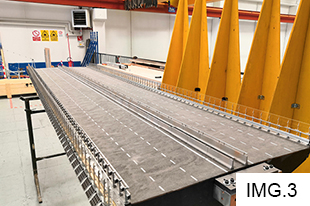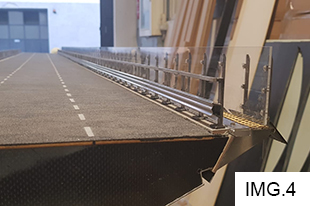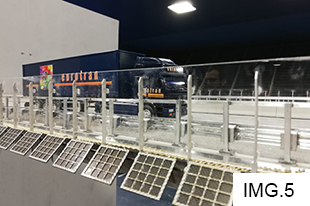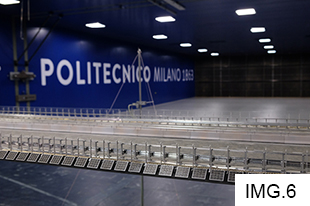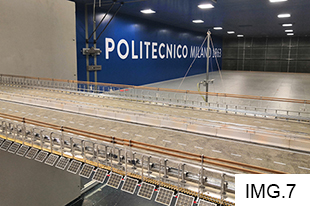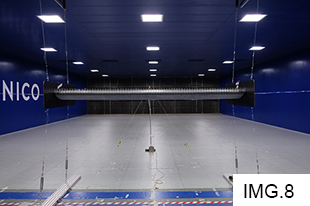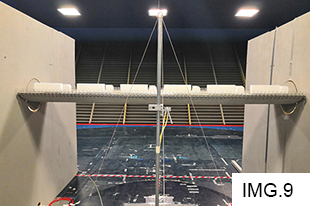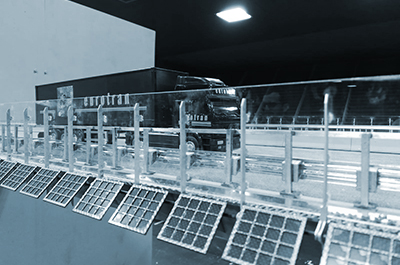
The reconstruction of the Genoa Bridge, which followed a very tight schedule, brought in foreground, together with the beauty and functionality of the structure, also the safety of vehicles in severe weather conditions, specifically under high wind action.
Right from the very first days after the assignment of the works to the Studio Renzo Piano for the design-architectural concept and to PERGENOVA (consortium company established by Fincantieri Infrastrutture and Salini Impregilo) for construction, the Politecnico di Milano was involved to coordinate the studies on the interaction of the wind with the structure and with the road traffic.
In the case of large infrastructures, typically large bridges, exposed to the wind action, the basic steps are:
- Determination of the specific wind characteristics of the location. In this case the local wind conditions were studied by the University of Genoa.
- Optimization of some architectural-functional options finalized at obtaining a correct wind-structure interaction in order to determine the definitive geometry of the bridge section. All of that done by POLIMI on the basis of CFD numerical simulations validated in the wind tunnel.
- Wind tunnel tests and numerical simulations, performed by POLIMI, for the final evaluation of the structure response to wind interaction and for the assessment of the vehicle safety to the wind action.
The involvement of Renzo Piano in producing the bridge architectonic concept had the great benefit of obtaining forms that are highly integrated with the environment of Genoa, in its identity connected with the sea and the port which gave rise to the deck shape in the form of a ship’s keel.
The desire of the Architect to build a structure that would be energetically sustainable in its future utilisation led to the incorporation of large surfaces of photovoltaic panels along the entire length of the deck.
Lastly, the essential requirement of vehicles safety to the wind action required the adoption of aerodynamically and aesthetically effective windshields.
An instructive challenge that poses some questions. Is it possible for the deck geometry of a bridge to virtuously integrate the various architectural and environmental needs and at the same time offer excellent aerodynamic and structural functionality? Can we take inspiration from the Genoa challenge in order to make this desire for integration in "compressed" times a distinctive feature really available in large infrastructures?
The wind tunnel tests
The Wind Engineering research group of the Department of Mechanical Engineering of the Politecnico di Milano, coordinated by Prof. Alberto Zasso, who for many years has been studying wind-structure interactions in large bridges and buildings, dealt with these questions in the PERGENOVA Research Project, in collaboration with the technical personnel of the wind tunnel and with the Department of Civil Chemical and Environmental Engineering (DICCA) of the University of Genoa (prof. Massimiliano Burlando), for the part related to the atmospheric physics.
The ongoing coordinated exchange of information with the Studio Renzo Piano and PERGENOVA in the early months of project development (December 2018 – February 2019), led to the progressive identification of an optimised geometry of the deck and optimized definition of functional and architectonic “details” of considerable impact in the wind interaction, such as photovoltaic panels and windbreaks. In this initial phase of rapid continual adaptations and changes, the aerodynamic validation of the various solutions and the proposal of original solutions were produced by POLIMI using Computational Fluid Dynamics (CFD) techniques i.e. with the “numerical experimentation”, now an essential instrument which accompanies the experimental studies.
Once a definitive solution for the deck had been achieved, the wind tunnel tests played the leading role of validation of the final optimisation choices and production of the aerodynamic data for calculating the structure performances to the wind interaction.
Wind tunnel tests on bridges with a constant cross-section are performed on a “sectional model” of the deck, reproduced at a suitable geometrical scale (in this case 1:40) undergoing “static” and “dynamic” tests. The essential results of the tests are not only the static forces due to the wind, but also and above all the dynamic stability limits (flutter) and the dynamic excitation due to vortex shedding. The integration of the experimental aerodynamic measurements with the numerical simulations inclusive of the structural characteristics of the bridge leads finally to a conclusive evaluation of the aeroelastic performance of the bridge.
The shielding conditions of the vehicles from the wind are measured experimentally through velocity profiles and force measurements on vehicle scale models, followed by numerical simulations of the vehicles driving stability, leading to the quantification of the infrastructure availability with no traffic limitations.
Captions fot the gallery
1. The cross-section of the New Genoa Bridge deck
2. Aerodynamic study and optimisation of the bridge deck using CFD techniques
3. The New Genoa Bridge: 1:40 scale sectional model for tests in the POLIMI wind tunnel
4. Leading edge of the deck: detail of “guard-rail / walkway” and wind screens
5. Leading edge of the deck: wind screens / photovoltaic panels and study of the wind-vehicles interaction
6. POLIMI wind tunnel tests on a the bridge sectional model
7. POLIMI wind tunnel tests on the bridge sectional model: wind screens optimisation
8. Set-up for vortex shedding excitation tests
9. Set-up for static aerodynamic coefficients tests (effect of the traffic)
10. POLIMI Wind Tunnel tests: visualisation of vortex shedding from the bridge deck

